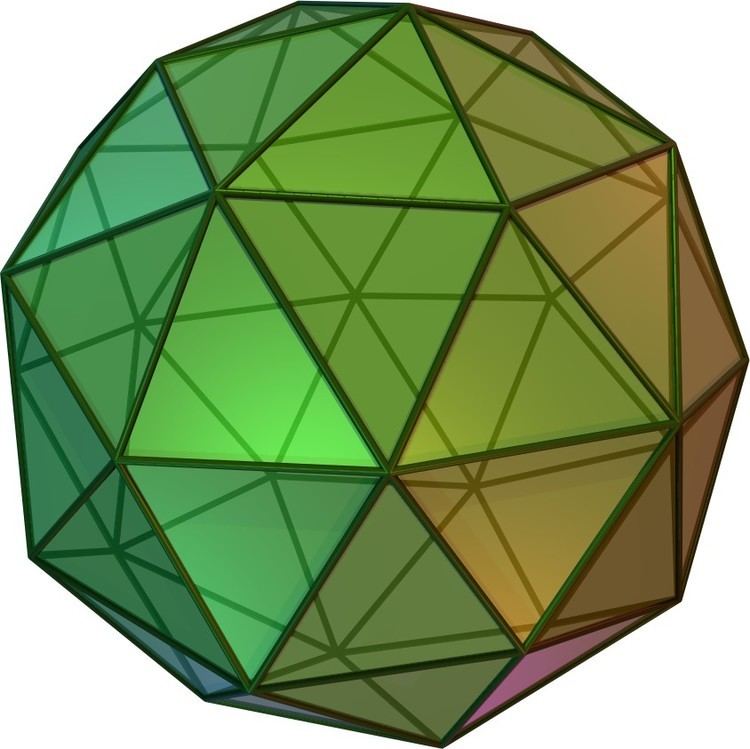 | ||
In geometry, a pentakis dodecahedron or kisdodecahedron is a dodecahedron with a pentagonal pyramid covering each face; that is, it is the Kleetope of the dodecahedron. This interpretation is expressed in its name. There are in fact several topologically equivalent but geometrically distinct kinds of pentakis dodecahedron, depending on the height of the pentagonal pyramids. These include:
Contents
Other more non-convex geometric variants include:
If one affixes pentagrammic pyramids into Wenninger's third stellation of icosahedron one obtains the great icosahedron.
Chemistry
The pentakis dodecahedron in a model of buckminsterfullerene: each surface segment represents a carbon atom. Equivalently, a truncated icosahedron is a model of buckminsterfullerene, with each vertex representing a carbon atom.
Biology
The pentakis dodecahedron is also a model of some icosahedrally symmetric viruses, such as Adeno-associated virus. These have 60 symmetry related capsid proteins, which combine to make the 60 symmetrical faces of a pentakis dodecahedron.
Orthogonal projections
The pentakis dodecahedron has three symmetry positions, two on vertices, and one on a midedge:
